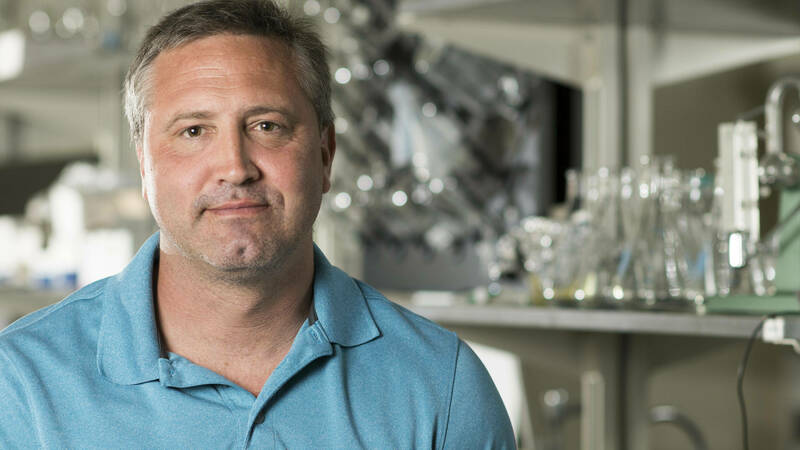
Christian Melander
George & Winifred Clark Professor
- Office
- 240F Mccourtney Hall
Notre Dame, IN 46556 - Phone
- +1 574-631-9036
- cmelande@nd.edu
Research Areas
- Biochemistry
- Organic Chemistry
Research Specialties
- Medicine
- Synthesis
Prospective Graduate Students
Biography
| Year | Title |
|---|---|
| 2018-Present | George & Winifred Clark Professor, University of Notre Dame |
| 2014-2018 | Howard J. Schaeffer Distinguished Professor of Chemistry, North Carolina State University |
| 2013-2018 | Professor, North Carolina State University |
| 2010-2013 | Associate Professor, North Carolina State University |
| 2004-2010 | Assistant Professor, North Carolina State University |
| 2002-2004 | Research Associate, The Scripps Research Institute |
| 1998-2001 | Postdoctoral Scholar, The California Institute of Technology |
| 1998 | Ph.D. in Chemistry, Columbia University |
| 1998 | M.Phil. in Chemistry, Columbia University |
| 1995 | M.A. in Chemistry, Columbia University |
| 1994 | B.S. in Chemistry, University of California - Davis |
Selected Awards
2014-2018 North Carolina State University Faculty Scholar
2012 NCSU Entrepreneur of the Year
2012 Industrial Innovator of the Year, Southeastern Region, ACS
2009 Sigma Xi Faculty Research Award
Research Interests
The Melander lab is interested broadly in applying the principles of synthetic organic chemistry and microbiology to deliver novel molecules that address problems associated with failure in antibiotic therapy for the treatment of bacterial infections. Specifically, we are interested in developing novel approaches to combat biofilm-based infections that typically give rise to chronic infections (such as those found in Cystic Fibrosis patients, indwelling medical devices, and diabetic ulcers), as well as acute bacterial infections caused by multi-drug resistant pathogens.
Bacterial Biofilms
A biofilm is defined as a surface attached community of bacteria encased in an extracellular matrix. Biofilms are typically 100-1000-fold more resistant to antibiotics and are recalcitrant to clearance by the host immune response. To address this problem, we are investigating the effects that simple structural motifs found embedded in complex marine natural products have upon biofilm development and maintenance. We have demonstrated that simple derivatives of the natural products bromageliferin and oroidin will inhibit and disperse biofilms from pathogenic bacteria as well as fungi and mixed species biofilms. We have also established that our 2-aminoimidazole-derived anti-biofilm agents are non-toxic to red blood cells, mammalian cell lines, and model organisms. The mechanistic basis by which these compounds inhibit and disperse biofilms, as well as the effect these compounds have in vivo are being pursued.
Multi-drug Resistant Bacteria
The rise of multi-drug resistant pathogens is threatening the vast medical advancements made possible by antibiotics over the last 70+ years. Surgery, premature infant care, cancer chemotherapy, care of the critically ill, and transplantation medicine to name a few fields are feasible only with the existence of effective antibiotic therapy. To address this issue, the Melander lab is currently pursing two distinct yet complementary avenues. The first focuses on new chemical matter that give rise to narrow spectrum antibiotic profiles (both small molecules and nanoparticles) that are potentially less damaging to commensal flora and less susceptible to resistance evolution. The second avenue relies upon an adjuvant approach, in which a small molecule that targets resistance mechanisms is paired with currently approved antibiotics. This latter approach is underpinned by the discovery that a certain sub-set of our 2-aminoimidazole library is able to render multi-drug resistant bacterial strains susceptible to various classes of conventional antibiotics. We are currently probing the mechanistic basis of this activity, augmenting activity through analogue synthesis, and exploring the in vivo potential of these compounds in animal models of infection.
Selected Publications
- Nemeth, A. M.; Young, M. M.; Melander, R. J.; Smith, R. D.; Ernst, R. K. and Melander, C. "Identification of a 2-Aminobenzimidazole Scaffold that Potentiates Gram-Positive Selective Antibiotics Against Gram-Negative Bacteria" 2024 ChemBioChem, 25 (8), e202400127. DOI: 10.1002/cbic.202400127.
- Li, H. T.; Nemeth, A. M.; Melander, R. J. and Melander, C. "Synthesis, Stereochemical Resolution, and Analogue Synthesis of Variabiline, an Aporphine Alkaloid that Sensitizes Acinetobacter Baumannii and Klebsiella Pneumoniae to Colistin" 2024 ACS Infectious Diseases, 10 (4), pp.1339-1350. DOI: 10.1021/acsinfecdis.4c00026.
- Bennett, A. N.; Woolard, K. J.; Sorge, A.; Melander, C. and Gunn, J. S. "Spectrum of Activity of Salmonella Anti-Biofilm Compounds: Evaluation of Activity Against Biofilm-Forming ESKAPE Pathogens" 2023 Biofilm, 6, 100158. DOI: 10.1016/j.bioflm.2023.100158.
- Crotteau, A. N.; Hubble, V. B.; Marrujo, S. A.; Mattingly, A. E.; Melander, R. J. and Melander, C. "Sensitization of Gram-Negative Bacteria to Aminoglycosides with 2-Aminoimidazole Adjuvants" 2023 Antibiotics-Basel, 12 (11), 1563.DOI: 10.3390/antibiotics12111563.
- Jenul, C.; Keim, K. C.; Jens, J. N.; Zeiler, M. J.; Schilcher, K.; Schurr, M. J.; Melander, C.; Phelan, V. V. and Horswill, A. R. "Pyochelin Biotransformation by Staphylococcus Aureus Shapes Bacterial Competition with Pseudomonas Aeruginosa in Polymicrobial Infections" 2023 Cell Reports, 42 (6), 112540. DOI: 10.1016/j.celrep.2023.112540.
- Harper, E. I.; Siroky, M. D.; Hilliard, T. S.; Dominique, G. M.; Hammond, C.; Liu, Y. Y.; Yang, J.; Hubble, V. B.; Walsh, D. J.; Melander, R. J.; Melander, C.; Ravosa, M. J. and Stack, M. S. "Advanced Glycation End Products as a Potential Target for Restructuring the Ovarian Cancer Microenvironment: A Pilot Study" 2023 International Journal of Molecular Sciences, 24 (12), 9804. DOI: 10.3390/ijms24129804.